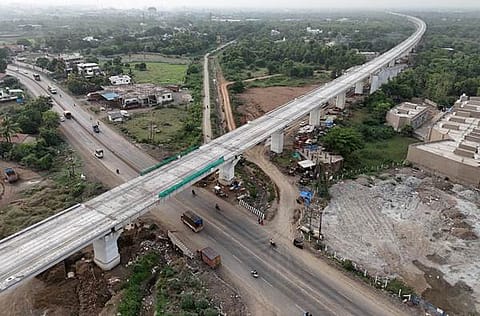India’s bullet train dream speeds ahead: First undersea tunnel section completed in Mumbai-Ahmedabad corridor
India completes first section of undersea bullet train tunnel. E10 Shinkansen trains to debut alongside Japan. MAHSR corridor gains momentum.

In what can be called a major breakthrough for India's first bullet train project, the Railways Ministry today said that it has achieved the completion of the first section of the 21-km undersea tunnel between Mumbai’s Bandra-Kurla Complex (BKC) and Thane, thereby marking a significant step forward in the Mumbai-Ahmedabad High-Speed Rail (MAHSR) corridor.
"The bullet train project has achieved a major milestone of opening the first section of the 21 km undersea tunnel between BKC and Thane. The bullet train project recently achieved a major milestone by completing 310 km of viaduct construction. Track laying, construction of overhead electrical wires, stations, and bridges is going on at a rapid pace. The construction work in Maharashtra has also picked up pace. In parallel, the progress on procurement of systems for operations and control is also going on well," the ministry said in a statement.
Construction work in Maharashtra, which had initially lagged, has now gathered momentum, the statement added.
Significantly, as per the Railways Ministry, India is set to introduce the next-generation E10 series Shinkansen trains, which would make India one of the first countries alongside Japan to deploy this model. The E10, an upgrade from the E5 trains currently used on Japanese high-speed lines, symbolises the growing strategic and technological partnership between India and Japan, the ministry noted.
"The entire 508 km corridor is being developed with Japanese Shinkansen technology. It will set new benchmarks for speed, safety, and reliability. This reflects the deep strategic and technological cooperation between India and Japan," the ministry said.
The scale and ambition of the project are reflected in several remarkable engineering feats. Of the 12 stations planned along the route, five have been completed and three more are nearing completion. The BKC station, described by the Railways Ministry as an “engineering marvel,” will feature a platform level 32.5 metres below ground and a foundation robust enough to support a 95-metre-high structure above it.
Additionally, 15 river bridges have been completed, while four others are in advanced stages of construction.
Recommended Stories
The Railways Ministry stated that the momentum generated by the MAHSR is expected to pave the way for more high-speed corridors across India, which are currently under active consideration.
"This remarkable pace of development showcases India’s capability to execute world-class infrastructure using cutting-edge global technology, with Japan playing a pivotal role as a trusted partner in this transformative journey," the ministry said.